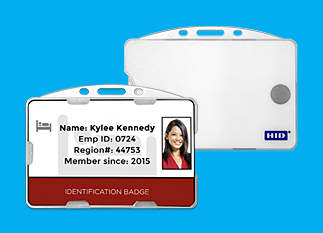Healthcare Workplace Violence Rapidly Rising
According to an Occupational Safety and Health Administration (OSHA) report, three quarters of all US workplace assaults occur in healthcare settings. Physical attacks on healthcare workers represent 11% of the workplace assaults that result in employees needing to take days off work. And the problem is getting worse.
How Does Workplace Violence Affect Nurses?
Assaults on healthcare workers — especially nurses — are on the rise. Whether these stem from frustration at COVID-related restrictions or treatments, staff shortages increasing the risk of staff working alone in patients’ rooms or an overall decline in civil discourse, the figures are truly shocking:
- 48 percent of 2,500 U.S nurses surveyed reported a small or significant increase in workplace violence between 2021 and 2022. That was up from 30.6 percent the prior year.
- The U.S. Bureau of Labor Statistics 2018 reported healthcare workers and those who work in social assistance jobs are five times more likely to be victims of workplace violence than all other workers in the US
- Rates of workplace violence in healthcare and social assistance almost doubled between 2010 and 2021
- Only 30% of assaults on nurses around the world are ever reported
- In the UK, body cameras were issued to ambulance crews in 2021 after data showed that they suffered 3,569 physical assaults by members of the public, representing a 30% increase in five years
The problem of hospital assaults is now so widespread that many healthcare professionals view attacks from patients and visitors as part of the risk of doing their job.
Causes of Workplace Violence in Healthcare
The increase in attacks on healthcare professionals has been linked to a number of factors including the opioid epidemic, reduced public funding for behavioral healthcare, disinformation surrounding COVID vaccinations, restricted visits to patients in isolation wards and grieving relatives blaming healthcare professionals for their loved ones’ deaths.
Workplace Violence in Healthcare Plans Mandated by Law
The Joint Commission Workplace Violence Prevention Standards requirement EP 9 mandates that hospitals have “policies and procedures to prevent and respond to workplace violence.”
The Workplace Violence Prevention report states that, as of January 2022, all Joint Commission-accredited hospitals and critical access hospitals must apply new workplace prevention standards which include training staff in physical and non-physical intervention and use of reporting processes so that the number of violent incidents are properly recorded.
In addition to staff training, preventative procedures can include physical resources, such as panic buttons, which allow nurses to call for help when they sense that they are in physical danger.
Response to workplace violence can include rapid deployment of security staff to physically protect nurses, accurate recording and reporting of violent incidents, and prosecution and provision of counseling to affected employees.
De-Escalating Conflict in the Healthcare Setting to Prevent Violence Against Health Workers
The Joint Commission report recognizes that timely intervention helps to prevent violent assaults on nurses and doctors. Prevention can take the form of verbal intervention by trained healthcare professionals and, as a last resort, physical restraint by security staff. However, an agitated patient may be triggered by their caregiver visibly pushing a panic button, or audibly calling for security. Therefore, discreet wearable call buttons have proved more effective at preventing violence against health workers.
How Can Hospitals Protect Healthcare Workers?
No healthcare professional should ever have to fear for their safety when providing care to patients in hospital. Hospitals have a moral and legal obligation to invest in employee safety.
The Workplace Violence Prevention report states that hospitals’ priorities are prevention, de-escalation, rapid response and prosecution. Effective training covers the first two requirements, while panic buttons facilitate rapid response.
A Better Way to Combat Hospital Violence
HID’s Real-Time Location Systems (RTLS) accurately record the location of people and objects that are outfitted with a tag. The solutions we enable can be extended to many use cases, including combating the epidemic of violence against hospital staff with our RTLS Duress products. When incorporated within the badge holders worn by nurses, HID’s Bluetooth® Low Energy (BLE) devices, equipped with a wireless push button, allow security personnel to immediately locate and protect employees at risk of attack. All without anyone but the employee knowing that a call for help has been issued. This discretion is key as the very act of calling for help can escalate the situation. These accessories are also available in a small fob.

How Hospitals Use RFID RTLS to Protect Employees
The HID IoT platform combines HID’s BEEKS™ Duress Badge Bluetooth® Low Energy beacons and BluFi™ Bluetooth® Low Energy to WiFi gateways, which instantly transmit nurses’ active RFID badge IDs and event time stamps to HID’s Bluzone™ cloud reporting and analytics system. The HID system integrates seamlessly with the hospital’s existing systems using REST APIs, to allow medical assets, patients and employees to be accurately located using a unified platform. The ease of integration protects hospitals’ existing IT investments and increases visibility of the immediate whereabouts of nurses and doctors, providing staff with the peace of mind that nearby colleagues can reach them before an assault can take place.
Better Healthcare Worker Safety and Peace of Mind, Minimal Infrastructure
Real-time location systems can deliver a measurable, positive impact on staff safety because they quickly direct security staff to colleagues under duress. Nursing staff suffer less anxiety when they know that their colleagues can pinpoint their location and immediately come to their aid when they press their wireless call button.
A major advantage is that hospitals don’t need to invest in complex infrastructure to make their staff feel safer. HID’s Bluetooth® Low Energy beacons, gateways and cloud management system can be quickly deployed over existing WiFi infrastructure, with minimal disruption to hospital operations, providing an easy-to-manage solution. The robust Bluetooth® Low Energy device batteries last for up to five years, reducing the operational overhead of replacing batteries. DC and solar options are also available.
Avoiding Alarm Fatigue in Hospitals
Hospitals are busy environments where a range of medical alerts and alarms can be heard throughout the day and night. Bluetooth Low Energy beacons that are activated by a nurse discreetly pushing the button on their badge will not add to the audio clutter as the call for help is silent. This proximity-based system gets help to people faster and avoids security personnel becoming desensitized to generic alarm calls and failing to respond. Alerts can also be easily canceled by nurses if the button is accidentally pressed, to avoid false alarms.
Why Are Hospital Staff at Greater Risk of Attack Than Other Workers?
Many caregiving activities take place in private spaces, such as bathrooms, cubicles and patient rooms. That leads to a heightened risk that nursing, medical and maintenance staff will be alone with patients who may be suffering from mental illness, head injury, adverse reactions to drugs or simple rage. These private areas increase the risk of assaults taking place where they will not be seen, heard, or interrupted. Providing staff with a wearable RTLS device that constantly pinpoints their location and is equipped with a discreet panic button, provides them with the peace of mind that even when they are out of sight they are never hidden from help.
Seamless Solution to Protect Healthcare Professionals
It is a sad fact that healthcare professionals face an increased risk of being physically attacked by hospital patients and visitors. The Joint Commission Workplace Violence Prevention Act makes it a legal requirement for hospitals to protect their employees from being assaulted. Investment in an IoT platform such as the HID RTLS, which integrates seamlessly with existing hospital WiFi ecosystems, allows hospitals to gain enhanced return on existing asset tracking and patient monitoring investments while improving visibility and providing peace of mind to hardworking healthcare staff.
Learn about HID’s Workplace Violence Solutions for Healthcare >>
Learn more about how HID RTLS can help you protect healthcare staff >>
Josie Herbert is a freelance writer based in the UK.
